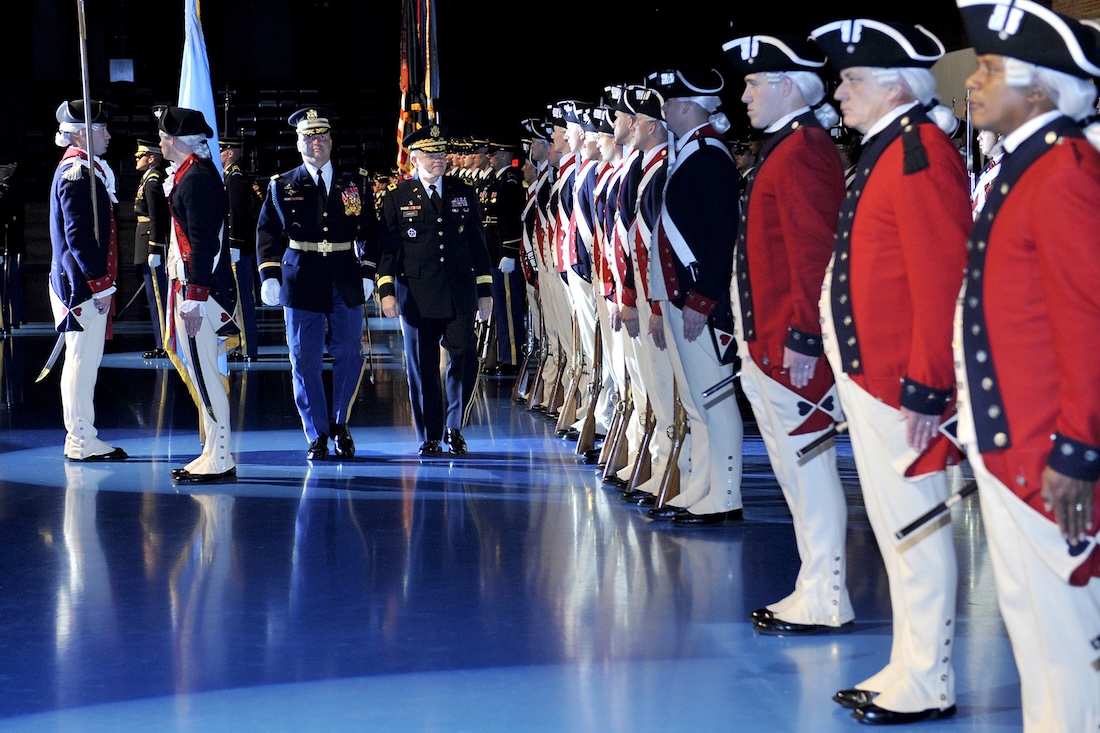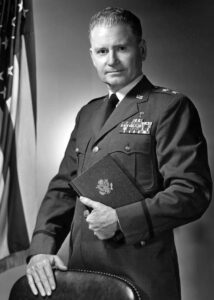ALPHARETTA, Ga. – As the nation prepares to celebrate its 250th anniversary next year, another significant U.S. institution hits that milestone this week. The Army Chaplains Corps formed on July 29, 1775, at the behest of the Second Continental Congress and the request of General George Washington. The Navy Chaplains Corps would follow in November of that same year.
Chaplains have served alongside the U.S. Armed Services in hundreds of conflicts through the decades, providing spiritual care and guidance to the military’s newest cadets on to the highest echelons of leadership.

“Whether enduring the brutal winter at Valley Forge, comforting the wounded and dying during the Civil War, braving trench warfare in World War I, storming the beaches of Normandy during World War II, marching over frozen mountains during the Korea War, slogging through the jungle battlefields of Viet Nam, or traveling the bomb-filled roads of Iraq and Afghanistan, our chaplains have always been there, answering the sacred call to serve God and country,” said Doug Carver in reflecting on the anniversary.
Before Carver joined the North American Mission Board (NAMB) as the executive director of chaplaincy, he served more than 30 years in the Army, retiring in 2011 as the Army’s Chief of Chaplains with the rank of Major General.
Religious leaders have followed soldiers into battle for millennia, often with a view toward maintaining the favor of pagan gods during battle. Lawrence P. Fitzgerald, in his “History of the Southern Baptist Chaplaincy” pointed to Phineas in the Pentateuch as one early example of someone fulfilling a chaplain-type role in the Bible.
“The English had chaplains in their forces as early as the 13th century. The French had chaplains with their forces as far back as the fifth century A.D.,” said retired Army Chaplain John Brinsfield, who served as the Army Chaplain Corps Historian at the U.S. Army Chaplain Center and School from 2002-2011.

Chaplains in the Medieval era primarily sought absolution for soldiers either before or after battle.
“Behind all of this was the idea that war was essentially a sin because it meant that people would kill each other,” Brinsfield said. “That’s where the roots of the notion of having chaplains came from, basically from the Roman Catholic Church.”
The Christian purview for chaplaincy, then, centers on the spiritual health of those encountering the moral hazards associated with warfare. When Washington began leading the military in 1775, he advocated the inclusion of chaplains serving within the Continental Army.
“Washington fully believed that the units needed chaplains,” said Brinsfield. “He wrote over 51 letters both to the Board of War for the Continental Congress and to governors of the colonies asking them to agree to pay chaplains as part of the officer corps.”
Chaplains would continue serving through the Revolutionary War and on both sides of the Civil War. The early 1900s saw the developments that spurred the development of chaplaincy as it is known today.
In 1917, the Army decided that chaplains should have their own school, and in the 1920s, Congress created the office of chiefs within the chaplaincy, which generated greater hierarchy and structure.
Chaplain Wiliam R. Arnold, a Roman Catholic, served from 1937 to 1945, the fifth U.S. Army Chief of Chaplains and the first to attain the rank of Brigadier General, then Major General.

“He did a lot to bring post chapels into being. That was so soldiers who are preparing to go to war could go to chapel at their training bases,” Brinsfield said.
World War II led the Army chaplaincy to grow to more than 9,000 as the United States sent millions to fight, and that era saw the rise of career chaplains who would serve twenty to thirty years.
At different points in U.S. history, some have challenged the legitimacy of a paid chaplaincy in the military, citing a violation of the separation of church and state. Yet, the U.S. Constitution and the Bill of Rights protects the free exercise of religion.
“If you don’t have chaplains that go with the military units, you don’t have anybody who helps provide free exercise of religion for your troops,” said Jim Spivey, who served in the Army as a field artillery officer before joining chaplaincy with the U.S. Army Reserves where he achieved the rank of Brigadier General.
Chaplains, Spivey said, provide a key role of advocating for soldiers’ religious freedom as well as highlighting the importance of spiritual health plays in the life of a member of the U.S. Armed Services regardless of the person’s faith or lack thereof.
“Commanders will think of the physical training, the mental training, the technical training, but they don’t always think of the spiritual core of the individual,” Spivey said. “But if you stop to think about it, in the heat of battle, the spiritual core is essential. We’re not just talking about emotions.”
Spivey played a role in ensuring that the Army placed the spiritual dimension of the human person into their training, and in the field, chaplains continue providing that spiritual support daily, even during the direst of war-time circumstances.
Robert Preston Taylor joined the Army chaplaincy in 1940 and was serving in the Philippine Division during the Battle of Bataan and spent 42 months in Japanese prison camps after American forces surrendered where he ministered to his fellow prisoners of war. He was even punished for smuggling food and medicine.
“He is probably Southern Baptists’ most illustrious chaplain because not only did he survive the Bataan Death March,” Spivey said, “but a revival also spread through the prison camps in part because of his survival of the ‘hot box’ where he was left to die.”
Taylor returned home having earned a Silver Star and went one to become Chief of Chaplains for the U.S. Air Force.

Today, there are roughly 3,000 chaplains throughout the various branches of the U.S. military, and Southern Baptists, as the largest Protestant group of churches in the nation, make up roughly a third of current chaplains.
“Pray for our Southern Baptist chaplains as they continue to point the precious souls under their pastoral care to faith in our Great God and Savior Jesus Christ,” Carver said. “Pray our chaplains help our troops discover the reality that the Lord of Armies is their only source of peace, comfort, and hope in times of peace and war.”
Published July 29, 2025
